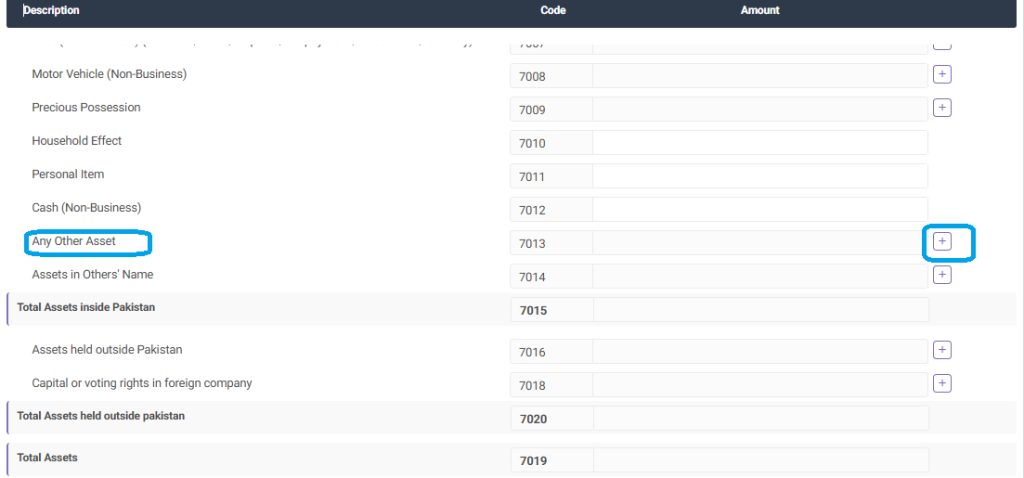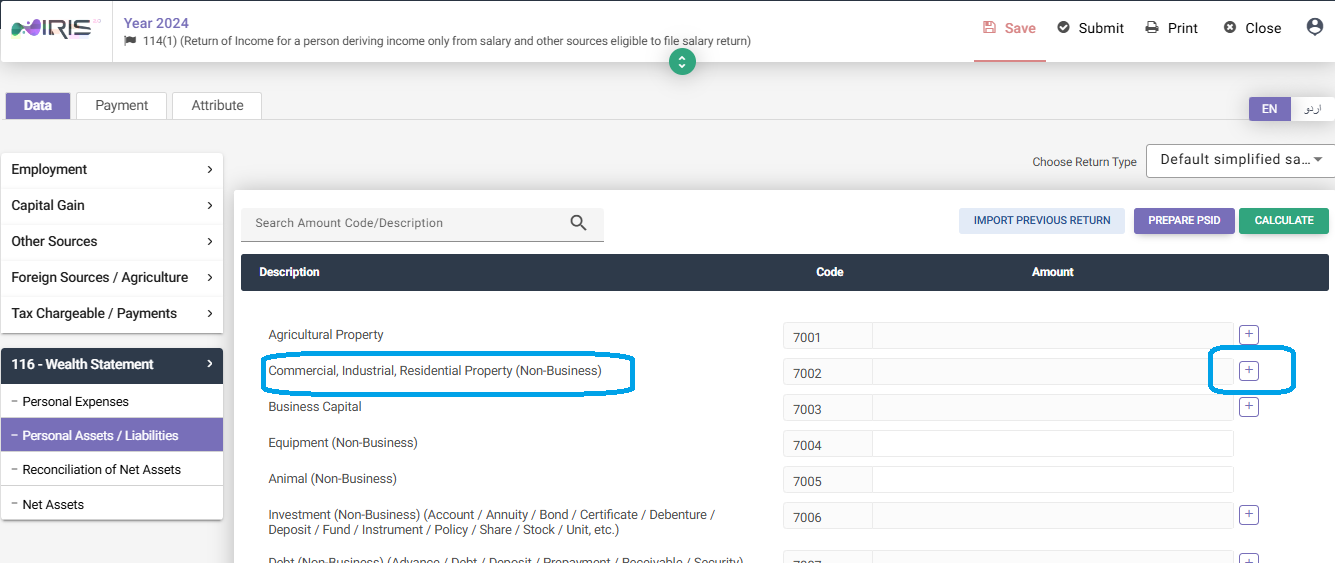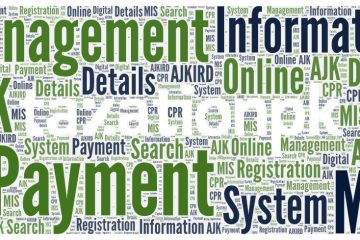In the landscape of wealth accumulation, investments in open plots or files – representing undeveloped land or rights to future property – are increasingly common. These assets, while not yet constructed properties, hold significant value and must be accurately declared in your tax return, particularly under the wealth tax provisions. This article provides a detailed guide on how to declare open plots or files, focusing on the specific requirements for resident individuals under Section 116 and the nuances of reporting these assets.
Understanding Open Plots and Files as Wealth Assets
Before diving into the declaration process, it’s crucial to understand how open plots and files are treated for tax purposes. They are considered immovable property under development, and therefore, are categorized as wealth assets. Unlike completed residential or commercial properties, open plots/files are typically declared under the “Other Assets” category initially.
Key Principles of Declaration
- Declaration at Cost: The fundamental principle for declaring open plots/files is at cost. This means you declare the amount you have actually paid towards the asset as of the tax year-end. For resident individuals in many jurisdictions (like the example suggests, aligning with a June 30th tax year-end), this is typically June 30th of each year.
- Incremental Declaration: Investments in open plots or files often involve installment payments over several years. You are not required to declare the total future value or the entire agreed purchase price upfront. Instead, you declare only the cost incurred (payments made) up to the tax year-end. The remaining payments will be declared in subsequent tax years as you continue to pay them.
- Section 116 and the Wealth Section: For resident individuals, the declaration of open plots/files as wealth assets falls under the purview of Section 116 (or the equivalent wealth tax/net wealth provisions in your specific tax jurisdiction). This section necessitates the reporting of various assets, and open plots/files, being valuable holdings, are included. You will typically find the relevant declaration fields within the “Wealth” section of your tax return form.
- “Other Assets” Category: Initially, and until the open plot or file transforms into a constructed residential or commercial property, it is generally declared under the “Other Assets” category. This is a broad category designed to capture assets that don’t neatly fit into predefined categories like real estate, stocks, or bonds.
- Transition to Residential/Commercial Property: The asset classification evolves when the open plot/file is transferred or developed. “Transfer” could mean selling the plot/file. More importantly, if you construct a building (residential or commercial) on the open plot, at the point of completion or when it becomes ready for use/sale as a building, its classification will shift. At this stage, when reporting in subsequent tax returns (especially if sold within a certain period triggering capital gains), it will be categorized under “Residential Property” or “Commercial Property”.
Step-by-Step Guide to Declaring Open Plots/Files
Let’s break down the declaration process into actionable steps:
1. Locate the “Wealth” Section and “Other Assets” Category:
- Access your tax return form. Navigate to the section dedicated to “Wealth” or “Net Wealth”.
- Within the wealth section, find the category “Other Assets”. This is where you will initially declare your open plot or file.
2. Determine the “Cost” as of the Tax Year-End:
- Track your payments: Compile a record of all installment payments you have made for the open plot or file up to the tax year-end (e.g., June 30, 2024).
- Include taxes and transfer charges: Crucially, remember that taxes and transfer charges directly related to the purchase become part of the cost of the asset. This includes:
- Stamp duty and registration fees: Paid at the time of purchase or registration of the plot/file.
- Municipal taxes or property taxes: Paid up to the tax year-end related to the plot (if applicable for undeveloped land in your jurisdiction).
- Any other transfer charges: Any other charges directly incurred to acquire the plot/file ownership.
- Calculate total cost: Sum up all installment payments made and the relevant taxes and transfer charges paid up to the tax year-end. This total sum is the “cost” you will declare.
Example:
Let’s say as of June 30, 2024, you have paid:
- Installment payments: Rs. 4,50,000
- Stamp duty and registration: Rs. 40,000
- Municipal taxes (for the period up to June 30, 2024): Rs. 10,000
Total Cost to Declare: Rs. 4,50,000 + Rs. 40,000 + Rs. 10,000 = Rs. 5,00,000
You will declare Rs. 5,00,000 under “Other Assets” in your wealth tax return for the tax year ending June 30, 2024.
3. Provide Detailed Information:
Accuracy and completeness are paramount. Within the “Other Assets” section, you will need to provide detailed information about the open plot/file. Essential details include:
- Description of Asset: Clearly state “Open Plot” or “Plot File” (or similar appropriate description).
- Area: Specify the area of the plot, typically in square feet, square meters, marla or acres.
- Locality/Address: Provide a precise address or locality details, including the plot number, street name, area name, and any recognizable landmark if available.
- City: Mention the city where the plot is located.
- Shareholding (if applicable):
- Wholly Owned: If you are the sole owner, state “Wholly Owned” or “100% Shareholding.” In this case, you declare the full cost calculated in step 2.
- Shared Property: If it’s a jointly owned property, clearly state your percentage share of ownership (e.g., “50% Shareholding”). You will then declare only your proportionate share of the cost. For example, if the total cost incurred up to June 30, 2024, is Rs. 10,00,000 and you have a 50% share, you will declare Rs. 5,00,000 (50% of Rs. 10,00,000). Clearly mention the names and CNIC szof other co-owners.
- Narration (Optional but Recommended): You can add a narration for clarity. For example:
- “Open Plot Investment – Installment Payments”
- “Plot File – Undeveloped Land”
- “Inherited Plot”: If you inherited the plot/file, explicitly mention “Inherited” in the narration. This can be relevant for understanding the asset’s origin and potential tax implications in the future.

4. Subsequent Years Declaration:
- Continue Incremental Declaration: In each subsequent tax year, as you make further installment payments and incur additional costs (like municipal taxes), you will add these amounts to the previously declared cost in the “Other Assets” section.
- Maintain Accurate Records: Keep meticulous records of all payments, taxes, and charges related to the open plot/file each year to ensure accurate declarations.
5. Transition to Residential/Commercial Property (Upon Transfer or Development):
- When you sell or transfer the plot/file: At the point of sale or transfer, it may trigger capital gains tax. In your tax return for that year, you will likely need to report this transaction under the relevant capital gains section. The asset might still be categorized under “Other Assets” in the wealth section if you hold it until the tax year-end of the transfer. However, the sale itself and capital gains will be reported elsewhere in the income section.
- When you develop a property: If you construct a residential or commercial building on the plot, the asset classification changes in the wealth section in the tax year following completion or when it becomes ready for use/sale as a building. It will then be declared as “Residential Property” or “Commercial Property” in the wealth section in future returns. The capital gains implications will arise if you sell this constructed property later.

Importance of Accurate Disclosure
Declaring your open plots and files accurately is crucial for several reasons:
- Legal Compliance: It fulfills your legal obligation to disclose your wealth and pay applicable taxes.
- Avoiding Penalties: Incorrect or incomplete declarations can lead to penalties and scrutiny from tax authorities.
- Accurate Wealth Reporting: It ensures your wealth is accurately represented in your tax records, which is important for various financial and legal purposes.
- Smooth Transactions in the Future: Clear and consistent declaration history can simplify future transactions related to the property (sale, inheritance, etc.).
Seek Professional Advice
Tax laws can be complex and may vary based on jurisdiction. While this article provides a comprehensive guide, it is always recommended to consult with a qualified tax advisor for personalized guidance based on your specific circumstances and the prevailing tax regulations. They can provide tailored advice and ensure you are fully compliant with all applicable tax laws concerning your open plot or file investments.
By following these guidelines and maintaining meticulous records, you can confidently and accurately declare your open plots and files in your tax return, ensuring compliance and peace of mind.




